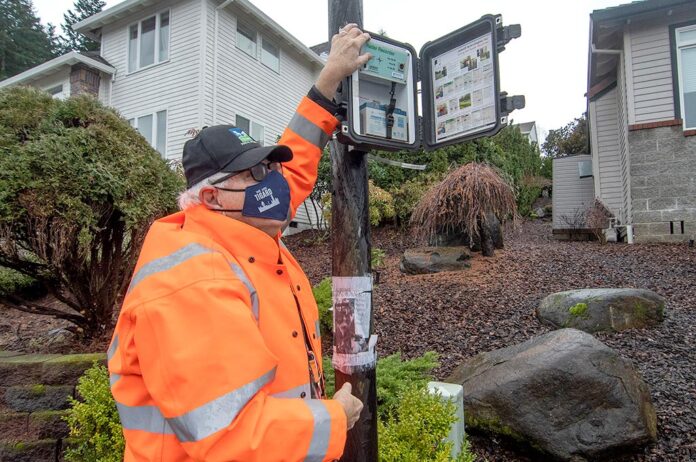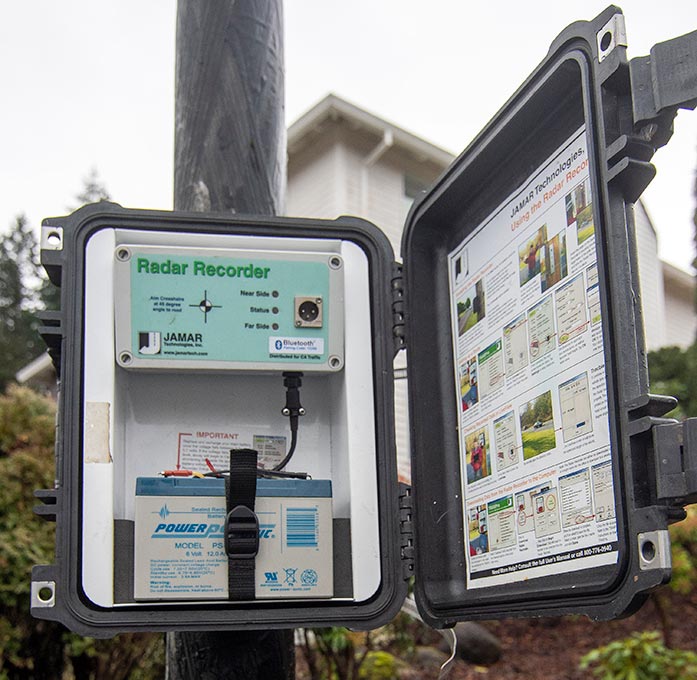
Hit the brakes Tigard residents, neighborhood speed limits are about to get lower.
The City of Tigard will soon be implementing new 20 mile per hour speed limits around the city, starting with existing school zones and expanding into areas with documented traffic safety issues, including routine speeding or reckless driving. City officials are eager to get the program started using an updated state law that allows cities to implement lower speed limits than normal in certain residential areas.
In Tigard’s case, this would involve lowering existing 25 mile per hour limits on residential streets to 20 miles per hour anywhere in the city this is possible. The move is being driven not only by the City, but at the request of residents.
“We’ve been updating our traffic concern policy, and one item related to that is looking at requests that are coming in with the 20 mile per hour limit,” City traffic engineer Tegan Enloe told Tigard City Councilors at their Dec. 15 meeting.
The policy, which will take several years to fully implement across the city, has the full backing of the Council.
“We advocated at the state to get the pilot that Portland had been doing to be allowed to implement that in other places,” Mayor Jason Snider said. “Moving forward with selectively working the 20 miles per hour residential zones in where appropriate makes a whole lot of sense.”
It is the volunteer work of Tigard resident Tom Petterson, however, that is allowing the City to get started more or less immediately.
Petterson is a retired Oregon Department of Transportation (ODOT) engineer who began working with the City back in 2005 after a road construction project near his home led to increased and unsafe traffic along his street. Conversations with City inspectors led him to begin volunteering his time to take traffic counts and speed survey. This was no stretch for him – he performed nearly identical work as part of his duties with ODOT.
“I hooked up with them and started volunteering to do the traffic counts and that basically was the start of it,” Petterson told Tigard Life. “It was something to do for me. I had retired a couple of years earlier from ODOT, my wife was still working at the time, so it gave me something to do and something to use my brain for – and get out of the house.”
During his time with ODOT, Petterson not only surveyed traffic, but he worked in IT as the agency made the massive change into the digital era back in the 1980s. He also spent time compiling data about traffic crashes and applying that to geographical information systems, or GIS.
With that background, it’s easy to understand his ongoing interest in traffic safety. These days, he primarily works by helping set up mobile radar units that measure both speed and traffic numbers. The COVID-19 pandemic has cut his workload significantly, but he still can be found working around the city.

“My work primarily is, we go take a traffic count and measure speeds and provide information on how much speeding there is,” he said. “We measure what the 85th percentile speed is, which is 85 percent of the travelers are traveling at that speed or less.”
The locations Petterson surveys are determined by resident complaints about speeding, or by a need to revisit spots that have not been surveyed for a number of years.
“They give me a list of where they’ve had complaints,” he said. “I also have a list of places where we try to repeat every three or four years, but that’s more for maintenance, probably. We want to know what the volumes are for maintenance of the roadway.”
So, armed with his equipment and a list of spots to hit, he sets out at the beginning of the week.
“I get a list of the complaints and I go out, usually on Mondays, put up a counting machine,” he said. “It’s radar, chained to a pole, and I set it up and then pick it up the following Monday.”
The data Petterson has helped compile since he began volunteering is integral to the City’s current plans.
“We have an archive of data available to us, 16 years’ worth,” Enloe said.
The proposed 20 mph limits won’t actually take legal effect until updated signs are posted, which could take some time. Enloe said school zones within the city, which already enforce a 20-mile-per-hour limit during certain times of the day, would be the first to fall under the new policy. From there, areas with “documented behavioral issues” or complex features would be next. This category could include streets that include trail crossings or parks or other features that draw bicyclists and pedestrians.
“These are the areas we’ve heard from the public on,” Enloe said.
Areas of Tigard where residents own fewer cars and rely more on public transit will also be prioritized.
Just how much of Tigard would be included in the new policy? A lot, Enloe said. However, the state law allowing the new limits does restrict implementation to residential areas. This means arterial streets and roads like Highway 99, Southwest Hall Boulevard and similar routes will not be affected.
The City plans to carry out a community-wide survey to gauge public opinion on the policy, as well as a program-specific website, postcards and other tactics to inform the wider public.
Police enforcement of the new policy will depend on staffing levels going forward, and the Tigard Police Department says it intends to focus on education and warnings before resorting to traffic citations.
“It is a matter of, in the beginning, managing expectations,” Tigard Police Chief Kathy McAlpine said. “If it’s Council’s direction that we make this an emphasis, we’ll rely a lot on public outreach and education ahead of time.”
Snider suggested that greater emphasis on enforcement would likely be needed to give the policy teeth.
“I would suggest the (police department) have its own sort of project plan and be ready for what they need to be ready for over the next couple of years,” he said.





















